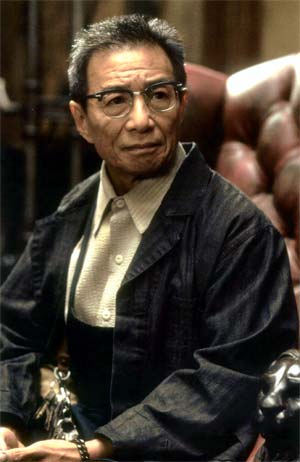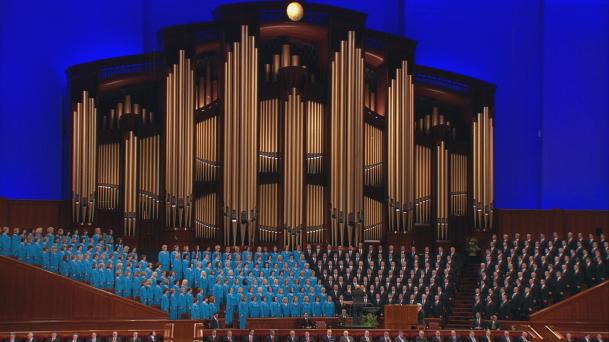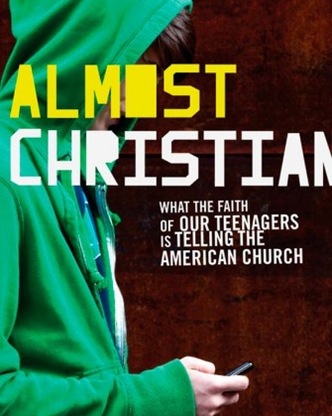Author: Dave Banack
-
Mormon Myths
If you haven’t read “Five Myths About Mormonism,” a piece at the Washington Post by Joanna Brooks, you should. There are plenty of Mormon myths out there, but few people are going to visit the LDS Newsroom or the Mormon Defense League to upgrade their ideas about Mormons and what we believe. We need more…
-
Who Wrote the Gospels?
It always helps to know who wrote what you are reading, and Bible books are no exception. The four gospels, in particular, present interesting questions of how the narratives were composed and who did the composing.
-

Handbook 2, Chapter 2: Priesthood Principles
Our series continues by looking at Priesthood Principles, the second of three foundational chapters found in the recently published Handbook 2 (“H2”). I’ll first touch on the status of H2, then discuss some of the topics covered in the three pages of Chapter Two.
-
Doctrine and Practice
I enjoyed Alison’s post from a couple of weeks ago, Does Gender Matter?, but I’m a little confused how the pieces fit together. The post appears to accept the nonscriptural, uncanonized Proclamation at face value, stating: “Gender is part of who we are and who we have always been. It is important. It matters.” That…
-
Women and Meetings
Once a year I attend a professional conference on juvenile law and practice. The keynote speaker at this year’s conference is Bruce D. Perry, a scholar and psychologist who studies the effect of trauma on brain development and who runs a clinical practice treating children and juveniles who are forced to deal with those difficult…
-
Cafeteria Correlation
Karl Giberson’s Saving Darwin: How to Be a Christian and Believe in Evolution (HarperOne, 2008) relates Giberson’s journey from fundamentalist Christian student to still-believing but no longer fundamentalist physicist. Chapter 5 of the book critiques the sources of Young Earth Creationism (YEC), primarily George McCready Price’s The New Geology, published in 1923, and Whitcomb and…
-
Evangelical Incivility
I am guessing many readers have already stumbled across a controversial opinion piece posted at Patheos last week, Warren Cole Smith’s “A Vote for Romney Is a Vote for the LDS Church.” Smith is the author of the book A Lover’s Quarrel With the Evangelical Church, so it is clear where he is coming from.…
-
The Language of God
I recently breezed through a short book by Herman Wouk (author of the Pulitzer Prize-winning novel The Caine Mutiny) titled The Language God Talks: On Science and Religion (Little, Brown and Co., 2010). The book has the virtues of being short, entertaining, and informative as it recounts the author’s quest to relate his deep religious…
-
Rethinking the Proclamation
What exactly is the Proclamation, or, to use its full title, The Family: A Proclamation to the World? It is not scripture. It is not a revelation. It is not even a Conference talk. What is it? What status does the Proclamation have at present in the LDS Church?
-
Church Discipline in the Internet Age
Sometimes technology changes everything. First came writing, then television, now the Internet: Instant global publishing by just about anyone on the planet. You. Me. The guy who just got called in for a chat with his stake president.
-
Making Mormons in the 21st Century
Jan Shipps always has something interesting to say about Mormonism. An essay you might not have run across is “Making Saints: In the Early Days and the Latter Days,” in Contemporary Mormonism: Social Science Perspectives (Univ. of Illinois Press, 1994). It turns out that becoming a Latter-day Saint (or acquiring the characteristics of Mormon ethnicity)…
-
More on the Mormon Gender Gap
Once upon a time, I wrote a post titled “The Puzzling Mormon Gender Gap.” It is still puzzling, primarily because it seems so inconsistent with the popular picture of the Church as a patriarchal institution run by old white males. When the topic came up recently in a ZD thread, the ZD discussants (generally a…
-
Debating Mormonism
A few weeks ago I judged several rounds of a debating tournament held at the local high school. Teams from all over the state participated. Imagine walking by a high school cafeteria and seeing a couple of hundred students dressed in suits and skirts, chattering like all kids do but also pouring over notes and…
-

Reading Scripture in the 21st Century
I recently read Thinking Through Our Faith: Theology for Twenty-first-Century Christians (Abingdon Press, 1998) by C. David Grant, a professor of religion at TCU. The book might be described as a short prologue to a 21st-century approach to theology, one that takes full account of science, historical criticism, and pluralism — in short, the sort…
-

Blogging on the Road to Damascus
Transcripts of the recent General Conference have been posted at LDS.org, including President Uchtdorf’s talk “Waiting on the Road to Damascus.” The talk was mostly a word of encouragement to those members of the Church who, for various reasons including self-doubt, are not full participants in their local wards. The focus of the talk was…
-
Regime Change in the LDS Church
I recently finished America’s Three Regimes: A New Political History (OUP, 2007) by Morton Keller, a retired history prof at Brandeis. The author suggests there have been three enduring American political regimes: a deferential-republican regime that lasted from the Revolution until the emergence of true party politics (Whigs and Democrats) during the 1830s; a party-democratic…
-
Sunday Afternoon Session
President Eyring conducted the last session of this April 2011 General Conference. Speakers included Elder Scott, Elder Christofferson, Carl B. Pratt, Lynn G. Robbins, Benjamin De Hoyos, C. Scott Grow, and Elder Holland. Readers are invited to leave a comment with their overall reaction to Conference and their sense of the general themes stressed by…
-

Reflections on the Priesthood Session
President Eyring conducted the Saturday evening Priesthood session, which offered talks by Elder Andersen, Steven E. Snow, Larry M. Gibson, President Uchtdorf, President Eyring, and President Monson. My notes below are basically summaries of the talks, but include rather loose paraphrases and a bit of commentary, so I have titled the post “Reflections on the Priesthood Session.” It was…
-

Saturday Morning Session
President Uchtdorf conducted the Saturday morning session, featuring talks by Elder Perry, Sister Jean A. Stevens, Walter F. Gonzalez, Kent. F. Richards, Elder Cook, and President Eyring, with brief remarks by President Monson. Direct quotations (based on my notes) are given in quotes; all other text represents my summary of the remarks given. Parenthetical comments…
-

Tsunami
I am sure that many of you have been following the stunning events in Japan: earthquake, tsunami, meltdown. Our first personal reaction to such events is always concern and sympathy for those swept up in the ongoing human tragedy. The first LDS institutional response, when resources are available, is to forward relief supplies and helping…
-
Challenges of Church History
Just finished A Brief History of History: Great Historians and the Epic Quest to Explain the Past (The Lyons Press, 2008) by Colin Wells. It is a quick review of all those names you have heard a time or two (Thucydides, Tacitus, Guicciardini, Ranke, Burckhardt, Turner, Braudel, etc.) woven together into a narrative. Favorite quote:…
-

Almost Mormon
I recently finished Almost Christian: What the Faith of Our Teenagers Is Telling the American Church (OUP, 2010) by Kenda Creasy Dean, a professor at the Princeton Theological Seminary. Chapter 3, entitled “Mormon Envy,” naturally attracted my attention. Almost Christian relies in large part on data gathered by the National Study of Youth and Religion…
-
Cruise Control and Doctrinal Ditches
On Friday night, I was heading up the Snake River Canyon toward Jackson Hole, with snow falling gently through the darkness. At the entrance to the canyon, the following message was brightly displayed on a portable electronic sign: “Slippery spots: Turn off cruise control.” I have never seen that particular message on a traffic sign…
-
Church and Family
After a flurry of posts related to the new edition of the CHI (now titled Handbook 1 and Handbook 2), the Bloggernacle has fallen silent. (The Salt Lake Tribune has followed up with a helpful article.) One of the new features of Handbook 2 (“H2”) highlighted in the worldwide training broadcast is the three introductory…
-
Downgrading Doctrine
Here is a second post (see No. 1) drawn from Stephen Prothero’s God Is Not One (HarperOne, 2010). In Chapter 7, titled Judaism: The Way of Exile and Return, Prothero comments on how ritual and ethics receive greater emphasis in Judaism and doctrine receives less emphasis than in, for example, Christianity. I wonder to what…
-
Unauthorized Practices and Other Selected Highlights From the Leadership Training Meeting
Things happen fast around here these days. Last night when I retired for the evening, nothing about yesterday’s Worldwide Leadership Training Meeting had yet been posted online. Now that I am home from church today and are sitting here at my computer, the video is publicly posted for all to read and discuss; Handbook 2…
-
Mormonism in God Is Not One
I’ve been reading Stephen Prothero’s new book, God Is Not One: The Eight Rival Religions That Run the World — and Why Their Differences Matter (HarperOne, 2010). I’m rather enjoying it, which is a bit of a surprise given that I’m not generally a religions of the world kind of guy. Anyway, Prothero devoted a…
-
How to Read the Bible
Last month I did a series of posts on religion and science; the theme for November is interpreting the scriptures. (Since November basically ends when Thanksgiving hits, I’m borrowing a week from October.) First up: a few thoughts on Steven McKenzie’s book How to Read the Bible: History, Literature, and Prophecy — Why Modern Readers…
-
Sunday Afternoon in a Nutshell
T&S does not run open posts — we figure readers ought to be listening to Conference rather than yakking online during the sessions. Instead, we do post-session summaries and posts looking at individual talks. Comments welcome. President Uchtdorf conducted the concluding Sunday afternoon session, featuring talks by Elder Perry, Elder Bednar, Elder Lawrence, three more…
-
Sunday Morning in a Nutshell
President Uchtdorf conducted the Sunday morning session, featuring talks by President Eyring, Elder Packer, Elder Jensen, Sister Cook, Elder Oaks, and President Monson. Direct quotations (based on my notes) are given in quotes; phrases without quotes are my summary of the remarks given. Parenthetical comments in italics are my own comments.
